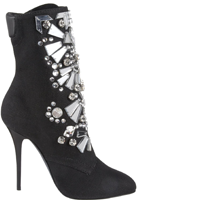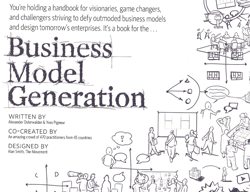
The Complete Product Owner
Act I: The Product
This post is part of the “Complete Product Owner” series.
A product owner is the owner of a product: so it makes sense to start our exploration of the product owner role with defining the actual product. What is it? What does it do? What value does it add? Who is it for? These are some of the questions that you’ll need to be able to answer. It seems obvious, but it is surprising how many product people I meet who cannot answer some of these questions convincingly.
The best product owners know their product inside out, but they can do more than simply recite a list of features… they can answer the core questions of: what are you building, how you are building it, and why. You are the product expert.
The Consumer Value Proposition
A very useful tool for expressing your product is a consumer value proposition (CVP). A value proposition is a statement that addresses the key questions: what does the product do, who is it for and, most importantly, how it adds value for a consumer.
As an example, consider the following two pairs of women’s shoes:
 Tom’s
Tom’s Catino Ballet Flats
 Giuseppe Zanotti
Giuseppe Zanotti boots
While being obviously very different shoes for (presumably) very different occasions, the specific value propositions set them apart even more.
The Tom’s ballet flats cost a fairly standard $79, are designed to be comfortable and made from sustainable resources; but unique to Tom’s shoes is their “One for One” program: for each pair of shoes sold, Tom’s gives a pair of shoes to a child in need around the world. The unique value proposition here is that when you buy Tom’s shoes you can also help needy children in third world countries.
The Giuseppe Zanotti boots have a very different value proposition. At around $1,400 they set a very different expectation in terms of price. Here the value that the consumer purchases is prestige, glamour and exclusivity. The core function of a shoe (comfort and protection of the feet) takes a total backstage in this proposition to make way for luxury and glamour.
Note that the CVP is more than just a simple list of features. The Tom’s proposition describes the what (shoes, comfortable), and describes differentiation (how they are different from other shoes) by creating a resonating focus on the aspect of giving shoes to needy children. The best CVPs are not only factual, but emotional as well.
The Consumer Value Proposition is a very useful tool and will help you explicate the core value of what you are producing.
What do you stand for?
A good question to ask in any product team is: “what do we stand for?” When a consumer hears about our product or company, what do we want them to think about?
Tom’s shoes stand for helping children in need. At Nokia we stand for connecting people, and empowering people to live adventure everyday. One level deeper, at Nokia Maps, we stand for putting you and your neighbourhood on the map, allowing you to be a local, anywhere.
Understanding what you stand for as a product team helps align the vision for the product and sets a common direction within the team. The most productive teams have the knowledge and context to make good decisions at all levels of the team, and when everyone has the same beliefs about what you stand for as a team, everyone can make better informed decisions that continue in the best direction for the product and the team.
Why?
Closely related to what you stand for is the why. That is, why you are building this product in the first place: what are the core beliefs that you have that lead you to invest in building this product? What is it that you believe in that makes you do this?
When “Tall” Tim Pethick started the phenomenal fruit juice brand “Nudie” in Sydney in 2003, he believed that bottled fruit juices should be produced with 100% fruit: no preservatives, no additives, no concentrates. This desire for pure, fruit-only juice enjoyment and the story behind it became a core part of the Nudie brand image.
Simon Sinek gave a fantastic TED-talk on the topic of why, which is highly recommended viewing.
Who is it for? Market Segmentation
As important as what is who. In order to create a product that solves the needs of your users/customers in the best way, you need to understand who your users are. This starts with understanding your market segment.
Segmentation is all about understanding your target market; or in other words, about breaking down the world of people into smaller sub-sets that define more specifically what kind of people are your actual potential users. My wife doesn’t play video games and isn’t in the market for a new PlayStation, for example. She is not the target market.
The Nintendo Wii is the most successful game console of the current generation, and the third most successful console of all time (in terms of units shipped, having shipped over 95 million units as of March 2012). At the heart of the innovative business model that enabled the success of the Wii is the segmentation strategy: Nintendo chose to focus on a very different demographic than other consoles: instead of focussing on the traditional (and extremely competitive) “hardcore gamer” market, Nintendo targeted the Wii towards a broader demographic of “casual” gamers. This allowed them to decrease the focus on cutting-edge performance and graphics required to compete in the “hardcore gamers” segment and allowed them to produce a more family-friendly and cost-effective device that has been decisive in their success.
Once you understand your specific market segment, you can target your designs and services directly for these people. In a later post we’ll look at building user profiles to represent your target market to help in this process.
The Elevator Pitch: sell your product in 30-60 seconds
We’ve all heard the expression “Elevator Pitch”, but here’s a short bit of revision: the idea is to imagine you find yourself in the elevator with your CEO, and she asks you: “What are you working on?” In the time it takes for an elevator ride you now have to pitch your product.
The point is that you have only 30 seconds to make someone understand what you do and be interested or excited about it. It’s a nice exercise because it forces you to focus on what is important to engage someone with your story. In nearly all cases reciting a laundry-list of features will not cut it: you’ll need to tell a story that highlights what value you bring to users.
My tip is to really practice your elevator pitch. Even if you never end up with your CEO in an elevator, you’ll have forced yourself to consider what is important.
For a nice example of an elevator pitch, check out Evernote CEO Phil Libin, present his 50 second elevator pitch for Evernote.
The spur-of-the-moment demo
As we used to say in the boy scouts, “Always be prepared”. You should always be ready with your elevator pitch, and likewise you should always be ready to give a demo of your product. Have a couple of different demo scripts ready to pull out at a moment’s notice. I have three that I use for Nokia Maps based on how much time I have to demo: 5 minutes, 10 minutes or 15 minutes.
You never know when you’ll be called on to demo the product spontaneously, and every demo counts: so being prepared will ensure you give a great demo, always.
Summary
Know your product, as you know yourself. Never forget that you’re the expert in your product.
One important thing to remember is that knowing and communicating are two very different things. It doesn’t matter how well you know your product if you are not able to communicate it to your team, your customers or your partners.
In the next post in the Complete Product Owner series we’ll look at the competitive landscape.
Resources

The Complete Product Owner
Act I: The Product
This post is part of the “Complete Product Owner” series.



